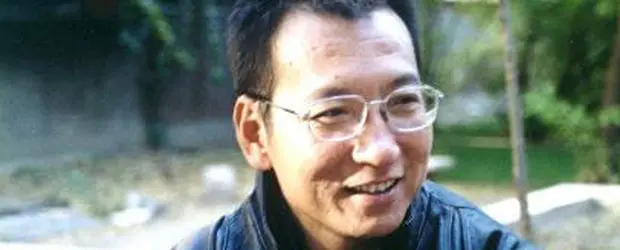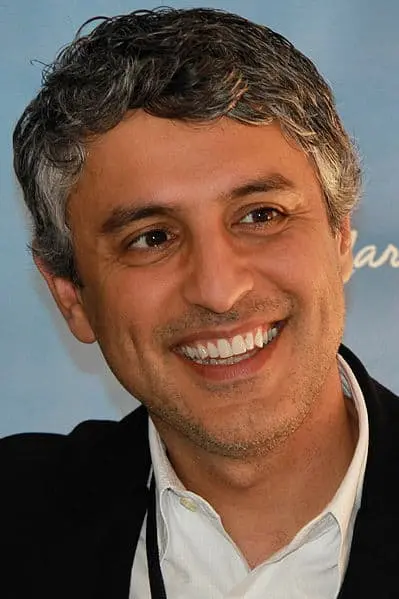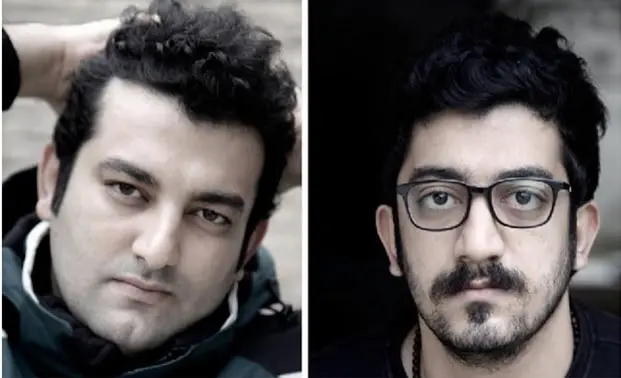 Joe Nocera and Ben Strauss’s Indentured: The Inside Story of the Rebellion Against the NCAA, is the winner of the 2017 PEN/ESPN Award for Literary Sports Writing. The following is an excerpt from the book.
Joe Nocera and Ben Strauss’s Indentured: The Inside Story of the Rebellion Against the NCAA, is the winner of the 2017 PEN/ESPN Award for Literary Sports Writing. The following is an excerpt from the book.
Submissions and nominations for the 2018 PEN Literary Awards are now open and will be accepted through August 15, 2017.
“I always believed the kids got the shaft,” Sonny Vaccaro said. “The N.C.A.A. would never allow the kids to have anything.”
It was a sunny afternoon in 2013, just about a year before the O’Bannon trial was set to begin, which of course would result in the N.C.A.A. being found in violation of the United States’ antitrust laws. Vaccaro, who’d had the original idea for the O’Bannon lawsuit, was sitting in the dining room of his small home in Pebble Beach, Calif. It was cluttered with boxes, the detritus of his long career as a sports marketer and more recently as the country’s most outspoken critic of the N.C.A.A. Vaccaro, 76, is an excitable man; from time to time, he would grab a document from a box and begin waving it in the air, the words practically tumbling out of his mouth.
Sitting next to him was his wife, Pam, an oasis of cheery calm. A former actress 18 years his junior, she had long since become Vaccaro’s aide-de-camp, senior adviser, sounding board and constant companion. By Vaccaro’s estimation, since 1992, he had taken only two flights without her.
Vaccaro was once the most notorious man in college basketball — the “sneaker pimp,” people called him. A Nike consultant in the late 1970s, he devised one of the greatest marketing ploys ever: paying coaches to put their players in Nike sneakers. He persuaded the company to sign Michael Jordan and make him the company’s signature athlete before he had played a single game for the Chicago Bulls. (Phil Knight, Nike’s founder, now plays down Vaccaro’s role: “Sonny helped, but he wasn’t the M.V.P. in that process,” he told USA Today last year.)
With Adidas in the mid-1990s, Vaccaro signed Kobe Bryant to a major shoe contract straight out of high school. He was a key figure in the Nike-Adidas sneaker wars of the 1990s, in which the shoe companies did unsavory things to steer the best high school players to one of “their” basketball programs. And all the while, Vaccaro ran a basketball camp and an all-star game for the best high school players, which routinely aroused the suspicion of the N.C.A.A.
“We created the commercialization” of college sports, Vaccaro says of his former employer Nike. “We were the first corporate entity to be involved with a coach or a university.”
It may seem hard to believe the same person would spark the most important case against the N.C.A.A. in a quarter-century. But if the O’Bannon case winds up going before the Supreme Court, and if O’Bannon wins — two big ifs, to be sure — the former sneaker pimp will rank with the greatest reformers in sports history.
Endless Investigations
For most of his career, Vaccaro had the N.C.A.A. nipping at his heels. He recalls being interviewed by an association investigator in the mid-1970s when the N.C.A.A. was going after Jerry Tarkanian, the coach of the University of Nevada-Las Vegas Runnin’ Rebels. “They wanted me to turn on Jerry, who was one of my best friends,” he said.
Years later, the N.C.A.A. began an investigation of an African athlete who was playing for the University of North Carolina and living with the Vaccaros in the summers. (It ended when Vaccaro produced the letter from the player’s mother naming him the athlete’s guardian.) And the association was forever opening investigations into one or another of the high school players at his summer camp.
Vaccaro’s legion of critics would accuse him of hypocrisy. After all, he made his living for years off the unpaid players. But Vaccaro bristles at the characterization. “The hypocrisy wasn’t me coming up with the idea,” he says of the scheme to pay coaches to have their players wear Nikes. “It was the N.C.A.A. letting us do it. At least I was putting shoes on the kids.”
In 2001, while working for Adidas, Vaccaro was invited to testify before the Knight Commission on Intercollegiate Athletics, a group that sought to keep commercialism out of college sports. “Why should a university be an advertising medium for your industry?” Bryce Jordan, the president emeritus of Penn State, said. “They shouldn’t, sir,” Vaccaro replied, according to the historian Taylor Branch. “You can be very moral and righteous in asking me that question, sir, but there’s not one of you in this room that’s going to turn down any of our money. You’re going to take it. I can only offer it.”
Still, what ultimately compelled Vaccaro to take on the N.C.A.A. was knowing so many high school athletes over the years and being appalled at the way they were treated by the organization. This was especially acute for disadvantaged black athletes, who he felt were singled out by the N.C.A.A.
There were other things that affected him. In 1997, he was on an ESPN panel about race and sports with Chris Webber, with whom Vaccaro had once been close. Webber talked about how he and the other members of Michigan’s Fab Five had introduced the baggy shorts style — a style that made millions for clothing companies — yet he could not even give a jersey to his parents without violating N.C.A.A. rules. “That hit me hard,” Vaccaro said.
That same year, ESPN paid $175 million for the two-year-old Classic Sports Network, which replayed old games, including many college games, for which it bought the rights. “I watched all those kids I had known intimately: Why can’t Pearl Washington get some of that money?” he said, referring to the great Syracuse point guard of the mid-1980s. It did not seem right to him that these players, long out of college, received nothing for the use of their images.
By 2007, he decided he had to take a stand. After long discussions with his wife, and with two years remaining on his $500,000-a-year contract with his employer, Reebok, he quit, concluding that so long as he was working for a shoe company, “people won’t take me seriously.” Vaccaro added, “I woke up and said, ‘I need to do this other thing.’” He needed to take on the N.C.A.A. full time.
But how?
He began by making a series of speeches on college campuses — Duke’s law school, and then Harvard, Yale and Maryland. He spoke with no notes, and his rambling digressions, of which there were many, were hard to follow for anyone who was not well versed in the Sonny Vaccaro story.
It didn’t matter. He was funny, angry and passionate as he condemned the N.C.A.A. for being, as he put it, somewhat over the top in one speech, “the most fraudulent organization that ever lived.”
“They receive all these benefits off the backs of kids,” he said. “I don’t understand why their only interest is in making things hard for athletes.”
After Vaccaro’s Maryland speech, Jason Zengerle wrote an article about him for The New Republic. “Vaccaro used his undeniable talents to help build college sports into the corrupt behemoth it is today,” he wrote. “The question now is whether he can use those same talents to tear the whole thing down.”
One of the people who attended Vaccaro’s Maryland talk was a Washington lawyer named Rob Ades, a college basketball aficionado who knew everyone in the sport. He told Vaccaro that the next time he was in Washington, they should get together. A year later, Vaccaro returned to Washington, and the two had lunch.
Vaccaro pitched Ades on the idea of suing the N.C.A.A. He had a half-dozen thoughts about what might serve as the basis for a class-action suit, including the fact that ESPN Classic — as it was now known — was licensing college games without paying the former athletes. Ades, who died in 2013, had no interest in bringing such a suit. But through Ades, Vaccaro met Michael Hausfeld, a prominent lawyer who had recently been forced out of his longtime firm and had started a new one.
Hausfeld, a thin, precise, soft-spoken man, is one of those lawyers who think of themselves as crusaders for social justice. He has sued Texaco for discriminating against minority employees; Exxon for the Exxon Valdez oil spill; and German industry for its use of slave labor during World War II.
Hausfeld, though, knew nothing about sports or the N.C.A.A.; tales would later circulate that he had to be told what a touchdown was. Not surprisingly, he did not know what to make of Vaccaro, who not only was immersed in the world of sports, but also could not have had a more different personality. But another of the firm’s lawyers, Jon King, knew exactly what to make of him. “After I explained his importance, I was deputized to meet with him,” King recalled. (King left the firm in the middle of the O’Bannon case, leading to a bitter dispute with Hausfeld.)
A Light Bulb Goes On
For his meeting with King, Vaccaro came prepared: He brought several large boxes of clippings and documents, contracts and files. He laid out all the things he felt were wrong with the N.C.A.A., from the lack of due process it afforded athletes and coaches it investigated, to absurd amateurism rules that regulated how many times an athlete could eat at someone’s house.
When Vaccaro mentioned image rights, the light bulb went on for King — and it stayed on as Hausfeld and King began researching the N.C.A.A. and its history of litigation. “It dawned on us how unique this would be,” King said. The N.C.A.A. had often been sued by current athletes — suits the association won or ones that simply went away.
“But the N.C.A.A. had never been sued by former athletes,” King continued. “Our guys would have real staying power. And the issue — that these guys were being deprived of the right to their own image — is a very easy-to-understand symbol of all the ways the N.C.A.A. deprives athletes of their rights.”
“It was a cartel right out in the open,” King said. “It got Hausfeld’s intellectual juices going. It was like taking on OPEC.”
As Hausfeld and King worked to get up to speed on the N.C.A.A., Vaccaro gave them leads and connected them to sources. “He was like an educator, teaching us about the N.C.A.A.,” King said. And he did the most important thing of all: He found Ed O’Bannon.
A lawyer cannot bring a case without a client — and from the start, Hausfeld was counting on Vaccaro to find him a former player who could serve as the lead plaintiff. He tried Pearl Washington. He tried Jimmy King, who also played on those Fab Five teams. Then, one day out of the blue, he got a call from O’Bannon, the former U.C.L.A. basketball great who was working for a Las Vegas car dealer.
Upset upon realizing that his image was being used in an EA Sports video game, O’Bannon turned to Vaccaro for advice. The two had been close when O’Bannon was in high school; O’Bannon did not really know anyone else to call.
Hausfeld and King quickly realized that O’Bannon — a poised, mature man with no skeletons in his closet — was the perfect plaintiff, and he agreed to take on the role. Vaccaro became a consultant on the case, helping round up other plaintiffs, including Oscar Robertson and Bill Russell. He refused, however, to accept any money, which amazed King. “For the work he did, he could easily have commanded $800,000 to $1 million,” King said. But Vaccaro felt that accepting a fee might allow the N.C.A.A. to cast aspersions on his motives. The case was filed in July 2009.
The Trial Begins
Nearly five years later — on the morning of June 9, 2014 — Vaccaro and his wife arrived at the federal courthouse in Oakland, Calif., shortly after dawn. It was the first day of the O’Bannon trial, and Vaccaro was positively buoyant. “I’ve waited my whole life for this,” he said, standing at the front of the line to get into the courthouse. As part of his preparation, he had read “Ladies and Gentlemen of the Jury: Greatest Closing Arguments in Modern Law.”
The preceding five years had not been easy for Vaccaro. As his finances dwindled, he had to downsize. The N.C.A.A. had made him part of the case, deposing him for hours. (The first question the N.C.A.A.’s lawyer asked him was, “Have you ever been convicted of a felony?”)
The trial itself lasted three weeks. Sonny and Pam Vaccaro sat in the courtroom for nearly every moment of it, listening to arcane antitrust arguments as well as sharp, pointed cross-examinations of the N.C.A.A. president, Mark Emmert, and others. He could barely express how happy it made him that the lawyers — on both sides — were treating the case with such seriousness. “The world is paying attention to us in Oakland,” he said.
On Aug. 8, 2014, Judge Claudia Wilken ruled that the N.C.A.A. was in violation of the nation’s antitrust laws and that the players should receive extra money to cover the full cost of attending college. She also said players could receive an additional $5,000 in a trust fund after leaving school. Vaccaro and the rest of the O’Bannon team were euphoric about the antitrust ruling, but disappointed that she was still allowing the N.C.A.A. to place limits on compensation to athletes. An appeals court upheld her antitrust ruling — which is helping to drive a new round of litigation against the N.C.A.A. — but dismissed her $5,000 trust fund. Vaccaro took that hard. He is now searching for new ways, beyond litigation, to take on the N.C.A.A.
In an email, Jon King wrote that years ago, while gathering documents from Vaccaro after he had been subpoenaed by the N.C.A.A., “he showed me folders he had compiled about the process by which now famous civil and human rights leaders had worked to change people’s perception of what is acceptable conduct.
“It was kind of a mindblower to see this physical documentation of just how serious and committed he was. And to me, there was a broader message in it about the thinking that is needed to try to effect major change. To be clear, he was never in the slightest way comparing himself to those figures. But I can see now looking back that there were times as lawyers when we might have been tempted to take the ‘low road’ on issues (as lawyers can tend to do), and Sonny would steer us to ‘the high road.’ When I saw his files, I felt like it really explained a lot about where he was coming from.”
This is an excerpt from Indentured: The Inside Story of the Rebellion Against the NCAA, published by Portfolio in 2016.












